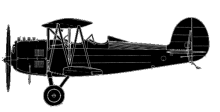
ASN Wikibase Occurrence # 289515
This information is added by users of ASN. Neither ASN nor the Flight Safety Foundation are responsible for the completeness or correctness of this information.
If you feel this information is incomplete or incorrect, you can submit corrected information.
| Date: | Saturday 26 February 2011 |
| Time: | 16:35 LT |
| Type: |  Great Lakes 2T-1A-2 |
| Owner/operator: | Private |
| Registration: | N6196L |
| MSN: | 0723 |
| Total airframe hrs: | 1601 hours |
| Engine model: | Lycoming IO-360-B1F6 |
| Fatalities: | Fatalities: 0 / Occupants: 1 |
| Aircraft damage: | Substantial |
| Category: | Accident |
| Location: | Kingsville, Texas -
 United States of America United States of America
|
| Phase: | Manoeuvring (airshow, firefighting, ag.ops.) |
| Nature: | Private |
| Departure airport: | Kingsville-Kleberg County Airport, TX (KIKG) |
| Kingsville-Kleberg County Airport, TX (KIKG) | |
| Investigating agency: | NTSB |
| Confidence Rating: |
The pilot took off to practice aerobatic maneuvers for an upcoming air show. After completing a hammerhead turn, he felt a slight vibration and the pitch control felt unusual. Returning to the airport, the vibration increased. The pilot landed but was unable to maintain directional control and the airplane ground-looped. The right horizontal stabilizer and elevator had separated from the airplane, striking the rudder and causing substantial damage. A postaccident examination revealed evidence of a pre-existing crack in the front spar near a riveted fitting. The spar moved outward and disengaged from the fitting. The inboard section rotated downward and separated from the airplane. The remaining portion of the stabilizer pivoted aft, separated from the airplane, and struck and damaged the rudder. A service alert from the airplane's manufacturer outlined a similar previous occurrence. Another emphasized the importance of properly rigged tail wires, noting that if the tail wires were improperly rigged excessive torque loads could be applied to the horizontal stabilizer front spar, causing the attach fitting to fail. Examination of the last annual inspection entry disclosed no reference to the horizontal stabilizer spar being inspected, nor did it indicate that either service bulletin had been complied with.
Probable Cause: A pre-existing crack in the front spar of the right horizontal stabilizer near a riveted fitting, causing it to fail and separate from the airplane in flight. Contributing to the accident was the failure of maintenance personnel comply with existing service bulletins and to detect and repair the damaged spar.
Accident investigation:
 |
|
Sources:
NTSB CEN11LA209
Location
Revision history:
| Date/time | Contributor | Updates |
|---|---|---|
| 05-Oct-2022 14:42 | ASN Update Bot | Added |
Corrections or additions? ... Edit this accident description
The Aviation Safety Network is an exclusive service provided by:


 ©2024 Flight Safety Foundation
©2024 Flight Safety Foundation